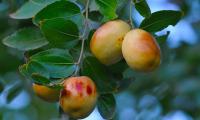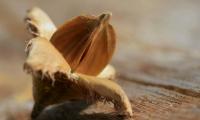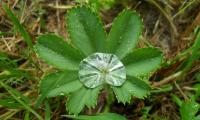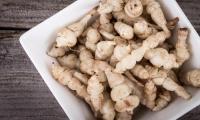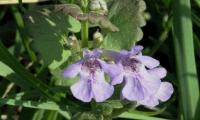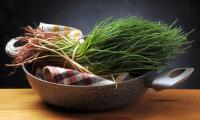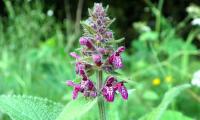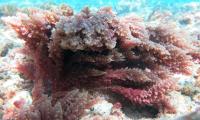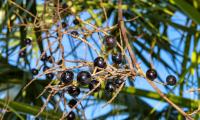The best perspective for your health
The best perspective for your health
The best perspective for your health
The best perspective for your health
Showing 521-532 of 532 items.
-
79 kcal
-
Water 78%
-
94/06/01
-
Ω-6 (LA) 0 g
-
Ω-3 (ALA) 0 g
The Chinese jujube (Ziziphus jujuba, Azufaifa, jujube) is used in medicine (pharmacy) as a tea. Raw? Organic?
-
576 kcal
-
Water 7%
-
37/07/56
-
Ω-6 (LA) 18 g
-
Ω-3 (ALA) 1.7 g
In autumn, beechnuts cover the forest floor as fruits of the beech tree. They are slightly poisonous when raw, edible when dried (heated) and taste nutty. Organ
-
0 kcal
-
-
00/00/00
-
Ω-6 (LA) 0 g
-
Ω-3 (ALA) 0 g
The common comfrey, also known as comfrey, is hardly used anymore as a food plant, but rather for external applications.
-
0 kcal
-
-
00/00/00
-
Ω-6 (LA) 0 g
-
Ω-3 (ALA) 0 g
The common lady’s mantle (Alchemilla vulgaris) has a recognized medicinal effect on diarrhea, gastrointestinal and menstrual problems.
-
0 kcal
-
-
00/00/00
-
Ω-6 (LA) 0 g
-
Ω-3 (ALA) 0 g
Tuberous beetroot (Stachys affinis), also known as Chinese artichoke, Japanese potato or simply stachys, is considered a rare specialty.
-
0 kcal
-
-
00/00/00
-
Ω-6 (LA) 0 g
-
Ω-3 (ALA) 0 g
Ground ivy is known as ground ivy, ground ivy and ground ivy. The inconspicuous wild plant is used as a spice plant because of its essential oils.
-
0 kcal
-
-
00/00/00
-
Ω-6 (LA) 0 g
-
Ω-3 (ALA) 0 g
The viper's bugloss (Echium) has bristly hairs and is rich in unsaturated fatty acids. We advise against eating it as it is potentially harmful to health.
-
17 kcal
-
-
52/43/05
-
Ω-6 (LA) 0 g
-
Ω-3 (ALA) 0 g
The spring vegetable monk's beard (Barba di frate, Agretti, Salsola soda) is similar to chives and can be eaten raw or cooked.
-
0 kcal
-
-
00/00/00
-
Ω-6 (LA) 0 g
-
Ω-3 (ALA) 0 g
Unripe chickpeas (organic) are green, unripe chickpeas, similar to peas. But they are not edible raw. They have a good LA:ALA ratio.
-
0 kcal
-
-
00/00/00
-
Ω-6 (LA) 0 g
-
Ω-3 (ALA) 0 g
Woundwort (Stachys) is edible as a vegetable and is considered healthy. European species are wood woundwort and marsh woundwort. Tuberous woundwort (Japanese po
-
0 kcal
-
-
00/00/00
-
Ω-6 (LA) 0 g
-
Ω-3 (ALA) 0 g
Limu Kohu (Asparagopsis taxiformis) is a red algae that is used raw, but often dried, as a seasoning in local cuisine. Organic?
-
0 kcal
-
-
00/00/00
-
Ω-6 (LA) 0 g
-
Ω-3 (ALA) 0 g
Extracts or powders from raw saw palmetto fruits are used as medicines or dietary supplements - also available organically.

